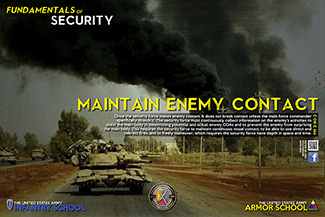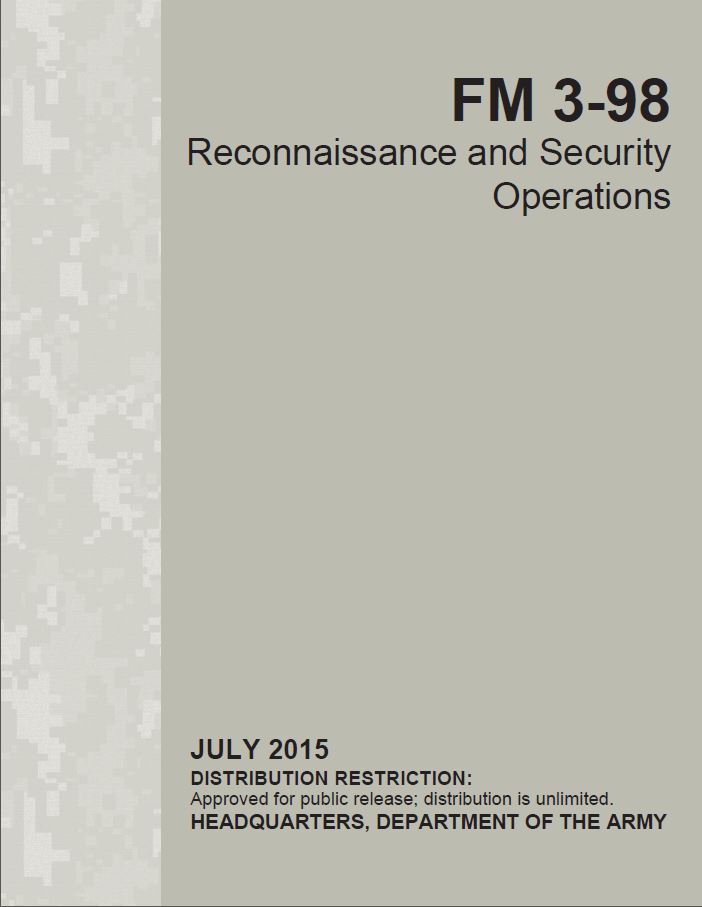MAINTAIN ENEMY CONTACT
Once the security force makes enemy contact, it does not break contact unless the main force commander specifically directs it. However, the individual security asset that first makes contact does not have to maintain that contact, if the entire security force maintains contact with the enemy. The security force commander ensures that subordinate security assets hand off contact with the enemy from one security asset to another in this case. The security force must continuously collect information on the enemy's activities to assist the main body in determining potential and actual enemy COAs and to prevent the enemy from surprising the main body. This requires the security force to maintain continuous visual contact, to be able to use direct and indirect fires, and to freely maneuver, which requires the security force have depth in space and time.
The Battle of Booneville 1 July 1862
Era: American Civil War
On the morning of 1 July 1862 a Confederate force of nearly 5,000 soldiers led by Brigadier General John R. Chalmers moved toward the Union supply depot at Corinth, Mississippi. Their path led them through Booneville, Mississippi. This town was held by a blocking force of Union cavalry commanded by Colonel Philip Sheridan that included the 2d Michigan and 2d Iowa Cavalry Regiments. He deployed a picket line forward of his main position to provide early warning of hostile forces.
Fundamentals of Security: Provide early and accurate warning
- The creation of the picket line ensured advance warning of threat actions
Fundamentals of Security: Orient on the force to be secured
- The Union picket line was positioned between Sheridan’s main body and the suspected enemy force, facing the direction of Chalmers’ likely path of advance
Chalmers lead combat units encountered Sheridan’s picket line, triggering a brief exchange of gunfire. This contact alerted Sheridan to the Confederate presence and ensured his main force sufficient time to deploy for battle. The Union pickets conducted a fighting withdrawal, seeking to slow the Confederate advance without becoming decisively engaged.
Fundamentals of Security: Provide reaction time and maneuver space
- The delaying actions of the Union pickets provided time and space for Sheridan to react
Fundamentals of Security: Maintain enemy contact
- The fighting withdrawal of the picket line ensured that contact with the Confederate attackers was maintained
Several roads led into and around Booneville. The Union picket line initially covered the most likely avenues of approach for the Confederates. However, as the picket line conducted its fighting withdrawal, one of the officers supervising its actions, Captain Russell Alexander, learned of additional hostile forces moving along other roads, threatening to envelop Sheridan’s main position. He immediately dispatched messengers to Sheridan, alerting his commander to the evolving tactical situation and outlining Confederate dispositions and actions. This information enabled Sheridan to alter his main battle positions to block Charmers’ multi-directional advance.
Fundamentals of Security: Perform continuous reconnaissance
- The vigilance of the Union picket line, even while under fire, ensured that the Confederate flanking attempt was quickly spotted
Fundamentals of Security: Provide early and accurate warning
- The rapid detection and reporting of the Confederate flanking movement enabled Sheridan to maneuver and block the enemy movement
When the Confederates finally made contact with the main line of Union resistance, they were met with concentrated fire and repulsed. Chalmers made several attempts to overrun Sheridan’s cavalry, but lacking the element of surprise and unable to mount an effective flanking operation, these efforts failed. The early warning and continuous monitoring of Charmers’ actions permitted Sheridan to respond in a timely fashion to emerging threats, thereby reducing each Confederate action to a costly frontal assault. A counterattack by the Union cavalry ensured Confederate defeat, and Chalmers withdrew from the battlefield. Sheridan received promotion to brigadier general for his victory.


